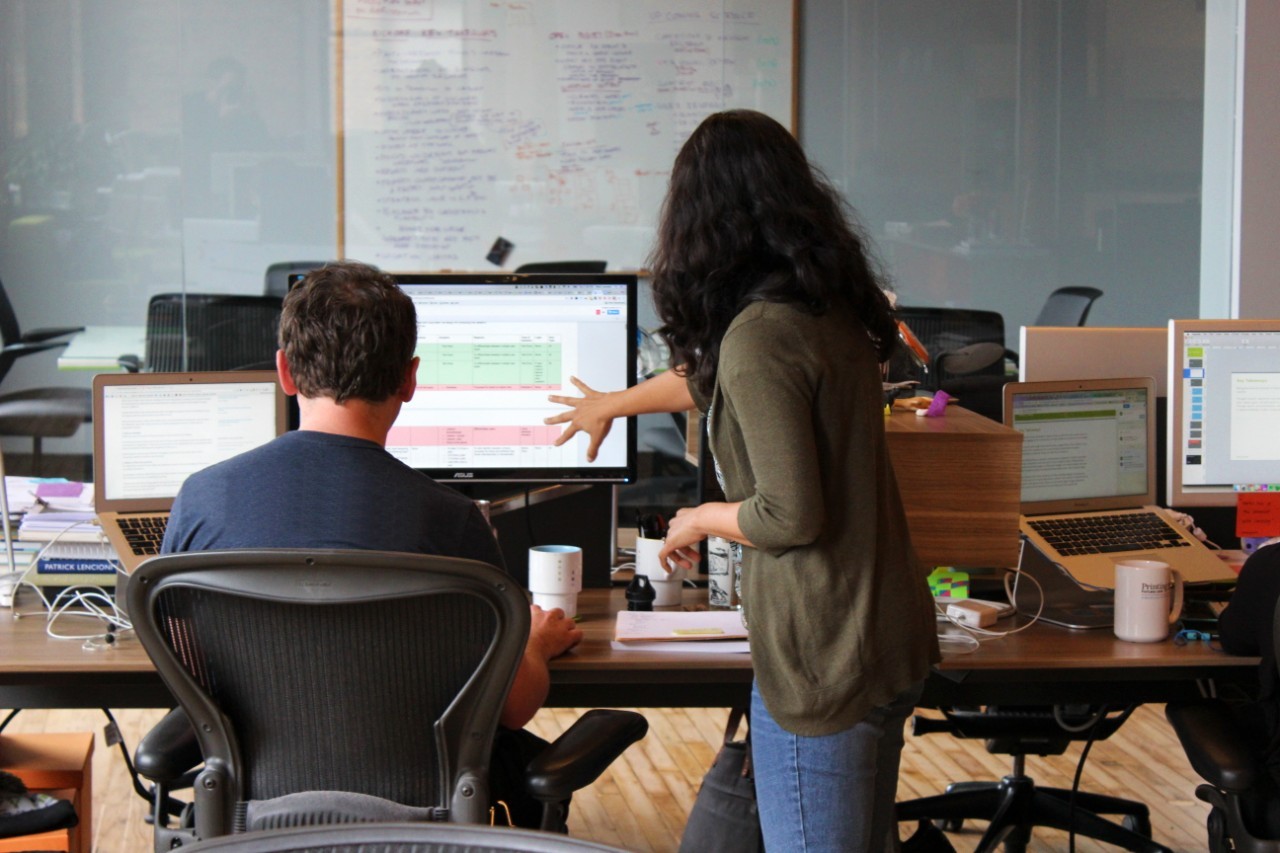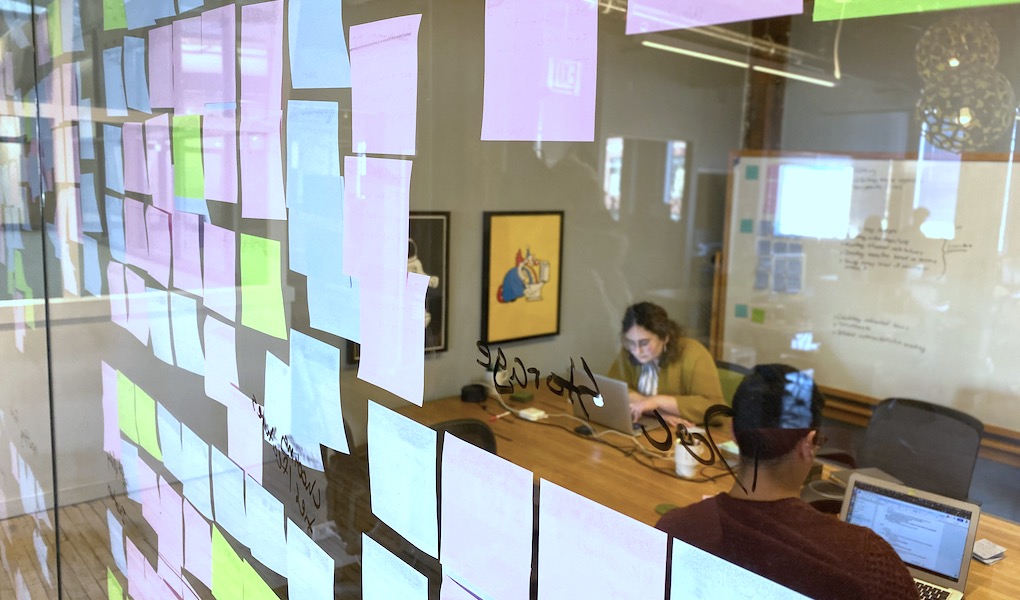
Enterprise applications, whether internal corporate systems or other B2B tools that help users at work, serve large organizations and vast numbers of users. The design and user experience of enterprise software is critical. Although difficult to get right, a well-designed enterprise tool provides a great user experience which also benefits businesses as a whole.
The exact methods and process might change based on the client or organization, but there are a few key elements to keep in mind when designing software for an enterprise context.
Great enterprise UX starts with great enterprise UX research
Before designing a great product, a designer must do the research to truly understand the user and their needs. With enterprise products, the research step is particularly important due to the inherent complexity of the tool, and the importance of the tool to accomplishing business goals. During the research phase, the designer must become an expert on the user’s work environment and their work-related goals and drivers.
Challenges to Conducting Enterprise UX Research
Enterprise UX research can be difficult to advocate for within large organizations, and even more difficult to conduct in specific industries. It’s often challenging to gain access to the right people and schedules can be tight. However, research is pivotal to understanding what the user needs to be successful at their jobs and helps designers create great products.
Read More: Finding the Right Candidates for Enterprise UX Research

Enterprise UX Research Methods
One of the most useful UX research methods when designing enterprise tools is contextual observation. If it is possible, the chance to sit with a user as they conduct their work within a real setting can be extremely impactful. During a project for a large insurance company, our team was able to travel to multiple service centers and sit with people as they used the current tool to process claims. Observing users helped us to better understand their workflows and gave us the opportunity to ask questions and gain context. We not only observed how they navigated the tool but also saw post-it notes with process reminders and spreadsheets that they used as workarounds for functionality that was missing in the current tool. Taking the time to observe their current process provided key insights for our later designs.
Read More: Conducting the Right Research in a Business Setting
If in-person research isn’t possible, similar research can be conducted remotely through video conferencing tools and screen sharing.
Involving the End User in Research
Another benefit of conducting enterprise UX research is giving the user an opportunity to be involved in the design process. Whether it’s during the initial research phase or through validation testing later on, most users appreciate a chance for their voice to be heard. They will feel more personally invested in a product that they provided feedback on and were able to influence. Once the product is ready to launch, these users will be more excited to adapt and advocate for the new tool, which will allow for a more seamless transition and less friction for the business.
Great Enterprise UX considers all users at all stages
When designing an enterprise product, a designer must consider all potential users. The product should be easy for a new user to understand, as well as not get in the way of expert users. (Again, this is why it’s important to understand the experiences of both novice and expert users during the research phase.)
When a product is designed intuitively, new users will be able to quickly learn to use it with minimal training. Instead of wasting time and money spending months training new employees, a company can onboard new users much quicker when the product itself is well-designed.
While it’s important to ensure that the product is easy-to-use for new users, designers also must consider a more “expert” user. When redesigning a product that has existed in an enterprise organization for many years, speaking to experienced employees is important to better understand how they get their jobs done today, including any shortcuts and workarounds they utilize. It can be difficult for these users to be open to adopting new tools, especially when they have done their jobs a specific way for many years. That is why it is critical to build a tool that makes their jobs easier. It shouldn’t get in the way of their process, but instead, enhance it by making an intuitive product that considers their workflow. An expert user will be more likely to adopt a new tool (and be excited about it!) when they are able to give feedback along the way and feel like the new tool is making their experience better.
Great enterprise UX benefits all current and potential users of a product. When a product is well-researched and well-designed, users regardless of experience-level will feel more capable and effective at their jobs.
Read More: Designing Efficient, Approachable Products for Novices and Experts
Great Enterprise UX makes work feel a bit less like work
Often in enterprise and B2B settings, the consumer and the end user are not one and the same. Instead, a department head makes the decision to purchase and use a product, leaving the actual end users with no input into the product that they use for multiple hours a day.
Great enterprise UX creates products that users want to use — when the product acts as a tool that enables them to get their work done, instead of an obstacle that makes their work harder.
Successful enterprise software UX design considers the following:
- Repetition: The entire product should feel cohesive, using consistent patterns and styles. When a product is consistent, a user can predict how to use different features based on how the rest of the system works. A great tool to ensure that the product is repetitive throughout is a design system. Design systems document the rules and patterns for an enterprise product. It provides a framework for not only the current product but for additional features that could be added in the future.
- Efficiency: The product should help users get their job done efficiently and effectively. By thoroughly understanding a user’s workflow, a designer can create a product that feels focused on the task at hand and minimizes any additional noise that interferes with a user’s goals.
- Clarity: Each page, feature, and component should be clear to the user. For example, error messages should not only indicate the problem but provide actionable, concise information on how to solve it. Primary actions should be visually differentiated and let the user know what their next step is at a glance. Tables and charts should be easy to read and understand. Each element should have a clear purpose for the user.
When a product is well-designed, the experience of using that tool day-in and day-out feels a lot more enjoyable. Although they might not have personally chosen to use the tool themselves, users will be happier with a product that works well for them and considers their needs.

Why We Love Enterprise UX Design
We at Fuzzy Math love tough challenges. We have experience working with many large enterprise clients and have been able to design software, deliver roadmaps, and offer strategies to better enable them to accomplish their business goals.
People, Data, and Process
We consider our sweet spot to be the intersection of people, data, and process — all of which make up great enterprise UX. In fact, enterprise systems and tools have people, data, and process in spades.
When we conduct enterprise UX research, we talk to people — consumers and end users, experts and novices alike — in order to understand goals and needs and create products that support their work. We observe their current workflows to understand any painpoints, roadblocks and inefficiencies.
We uncover the details in complex systems to find ways to present data in clear, actionable ways. We strive for users to feel empowered by information, instead of overwhelmed by too much at once or confused by what story the data is telling
We design tools that fit into existing ecosystems and create workflows and processes that prioritize simplicity and purpose. We want to help users get their jobs done efficiently and effectively.
The Future of Enterprise UX
We are constantly thinking about the future of enterprise UX, and how we can iterate and improve our methods in order to deliver great products that impact businesses in meaningful ways. Business and enterprise software deserves the usability, user-friendliness, and updated UI of consumer-facing applications. And at the end of the day, business users deserve the same.
Do you or your company have an interesting enterprise UX challenge that you think Fuzzy Math might be a good fit to tackle?